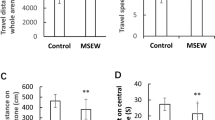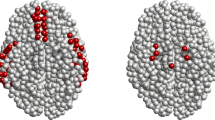Abstract
The relevance of transglutaminases with neural function and several disorders has been emphasized recently. Especially, many polypeptides associated with neurodegenerative diseases are suggested to be putative transglutaminase substrates such as β amyloid protein of Alzheimer's disease, microtubule-associated proteins and neurofilaments, etc. In addition, the CAG repeated gene products with probable polyglutamine tract, putative transglutaminase substrates, were identified in several neurodegenerative disorders. However, the identity of the brain transglutaminase has not been confirmed, because of enzymic stability and low activity. In the present experiment, we have isolated brain-specific transglutaminases, designated as TGase NI and TGase NII, which are different from other types of transglutaminases in respects of molecular weights (mw. 45 kDa, 29 kDa respectively), substrate affinity, elution profile on ion-exchange chromatography, sensitivity to proteases and ethanol, and immunological properties. The enzymes were localized specifically in the brain tissues but not in the liver tissue. And neural cells such as pheochromocytoma cell, glioma cell, primary neuronal and glial cells were shown to be enriched with TGase NI and TGase NII. The possible biological roles of the enzymes were discussed not only on the aspect of crosslinking activity but also of signal transducing capacity of the enzyme in the brain.
Similar content being viewed by others
Article PDF
Author information
Authors and Affiliations
Rights and permissions
This is an Open Access article distributed under the terms of the Creative Commons Attribution Non-Commercial License (http://creativecommons.org/licenses/by-nc/3.0/) which permits unrestricted non-commercial use, distribution, and reproduction in any medium, provided the original work is properly cited.
About this article
Cite this article
Kwak, S., Kim, S., Kim, Y. et al. Isolation and characterization of brain-specific transglutaminases from rat. Exp Mol Med 30, 177–185 (1998). https://doi.org/10.1038/emm.1998.26
Published:
Issue date:
DOI: https://doi.org/10.1038/emm.1998.26



